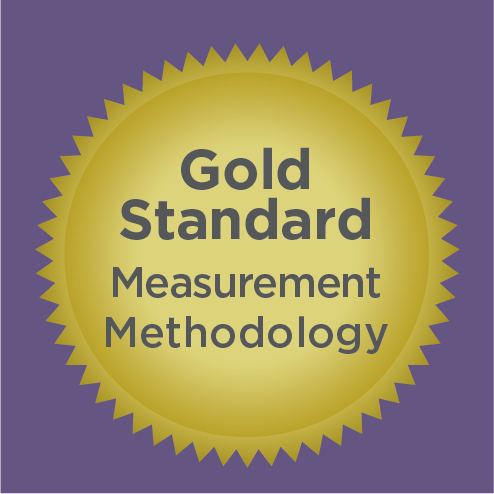An aptitude for science and an alertness for details are two critical skills that helped me build a successful career as a registered pharmacist. Both, of course, are essential competencies for anyone who wants to succeed in the pharmacy field. But another quality that’s less tangible but equally crucial is the capacity to establish trust. It is not surprising that year after year, the Gallup consumer poll of honesty and ethical standards among various professions puts pharmacists in the top three.
I think about this a lot because in my role heading up the analytics group for Rx EDGE, I appreciate the combination of science, detail, and trust that goes into measuring every Rx EDGE program.
Science: The “Gold Standard”
The protocol we use, a Matched-Panel Experimental Design, is about as scientific as you can get in the world of marketing measurement. I’ve been in several meetings where I’ve heard pharma marketers and retail partners alike call it the “gold standard” because of its validated statistical design and level of accuracy.
By testing under live conditions on a well-crafted test vs. control basis, marketers can confidently evaluate the impact of our programs. Retailer-supplied Rx sales data is used, which means that we are able to capture actual incremental script volume attributable to the Rx EDGE program.
 Attention to Detail: Comprehensive Research Execution
Attention to Detail: Comprehensive Research Execution
Every element of the process – from matching the test and control panels to analyzing post-program data − requires thoroughness, accuracy, and precision. In a nutshell, here is what’s involved:
 Rx EDGE programs are isolated from seasonal and market factors, which might impact a store’s performance
Rx EDGE programs are isolated from seasonal and market factors, which might impact a store’s performance- Test and Control panels are statistically matched based on attributes including sales patterns, geography, media exposure, demographics, hours of operation, and store footprint
- Panel matches are refined further based on the client brand’s scripting volume during a twelve-week Base Period
- Usage of the Base Period insures that scripting was matched
in Test and Control stores before the Rx EDGE launch - Measurement periods: 12-week Base Period followed by Test and Post Periods
- Controls: Rx EDGE units placed in Test Panel stores (none in Control Panel)
- Relative changes in script volume are compared in the Test vs. Control panel
Despite its seemingly simple premise – compare the panel where the program ran with a matched panel where it didn’t, and observe the changes in script sales – the matched-panel method vitally depends on meticulous attention to detail.
 Trust: Delivering What We Promise
Trust: Delivering What We Promise
We take the analytics process very seriously. But that really doesn’t mean anything unless our clients fully trust the metrics, the process, and the results.
For that reason, we use an “independent third party” research firm. This firm receives the script sales data, conducts the analysis, and frequently presents the findings at the conclusion of the respective analysis periods. Our clients can rest assured that they are getting an unequivocal view of the program’s effect.
Putting It All Together
A pharma marketer’s ability to develop the best plan and make effective decisions demands the use of reliable metrics. That’s why I get so much satisfaction out of helping our pharma clients determine the real effect of the programs they execute with us and consulting with them about ways to use those learnings to adjust future strategies.
I may not be a practicing pharmacist anymore. But in overseeing the analytics area for Rx EDGE, I figuratively put on the traditional white coat and use my pharmacist skill set every day: knowing the science, paying attention to the details, and earning trust.

